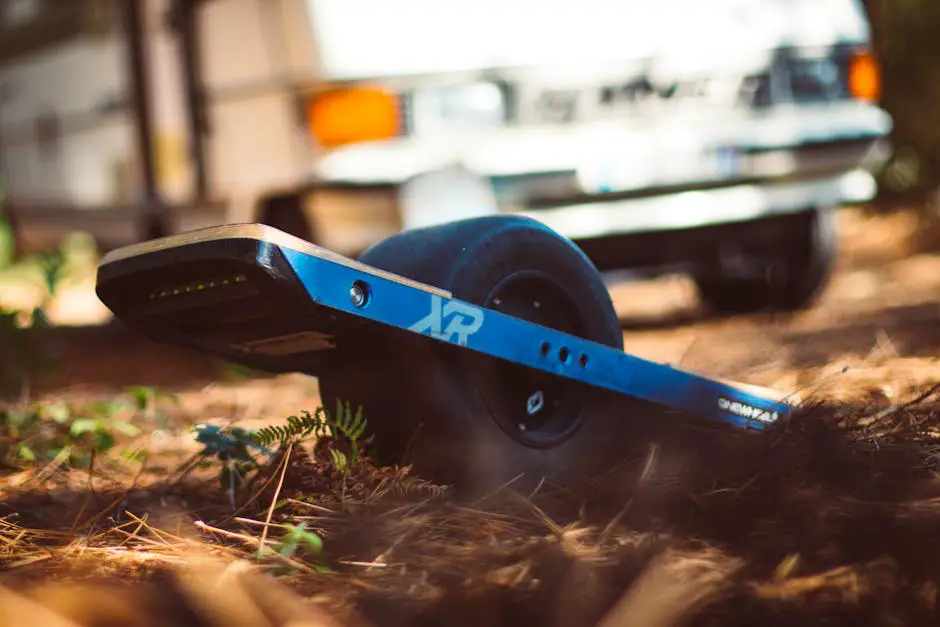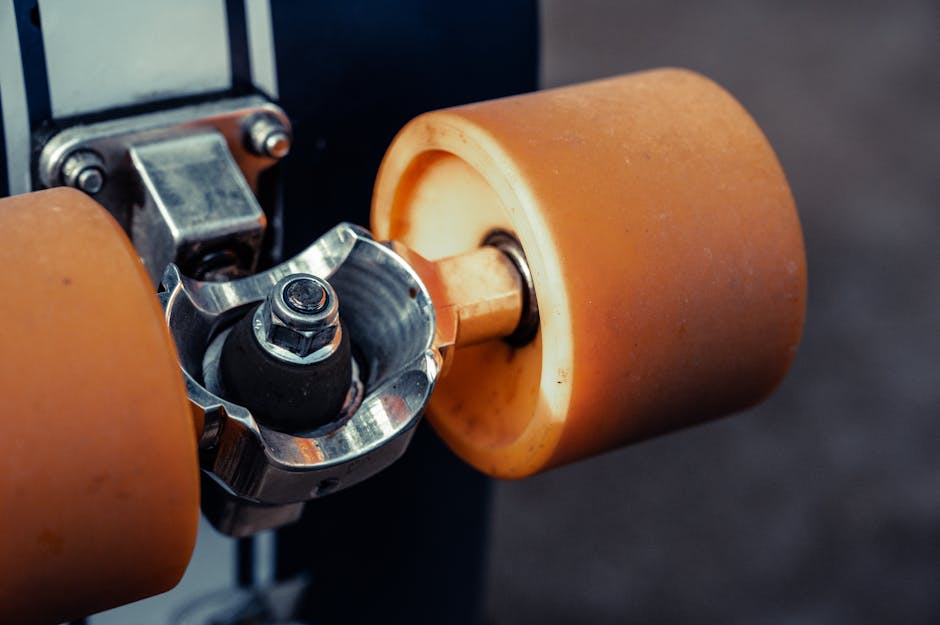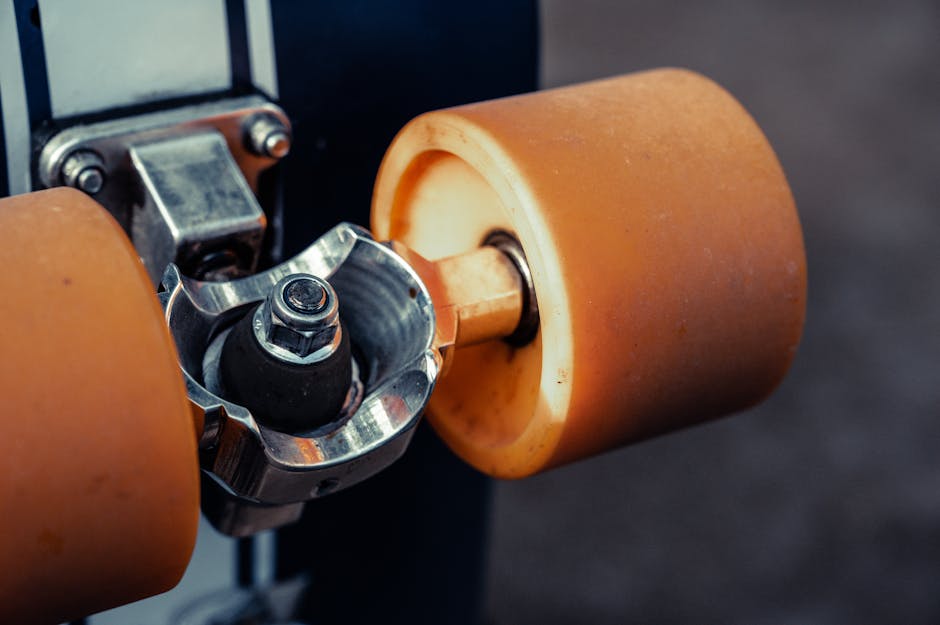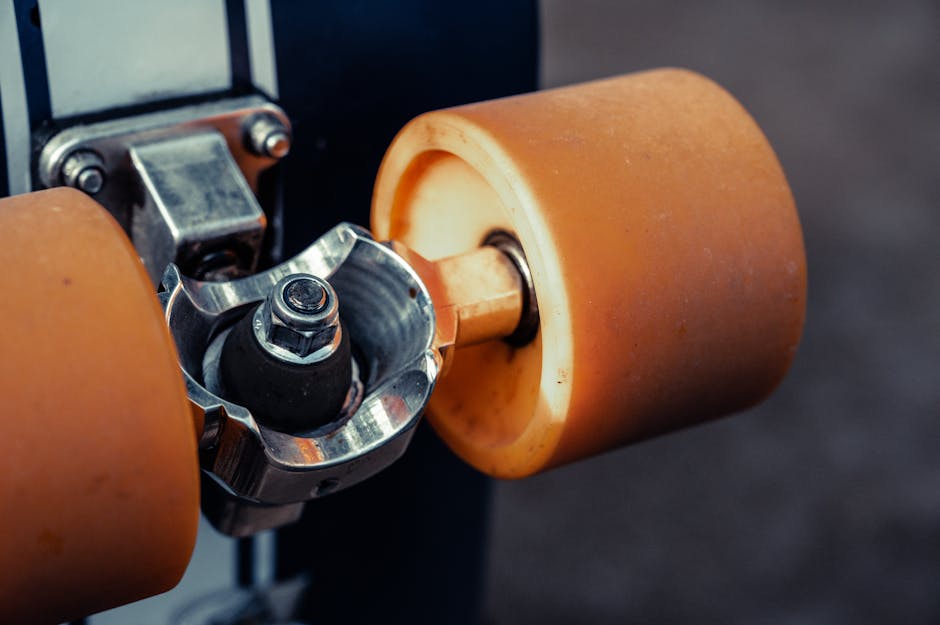Electric skateboards are revolutionizing the way we move around in cities, blending the joy of skating with the practicality of commute. At the heart of this transformation lies a component whose importance often goes unnoticed: wheel size. This piece aims to shed light on how wheel size influences everything from the skateboard’s speed and comfort to its maneuverability and overall performance. As we explore the implications of wheel choices, we invite both newcomers and seasoned skateboarders to gain insights that could redefine their riding experience.
Impact of Wheel Size on Overall Performance
Electric Skateboards: The Impact of Wheel Size on Performance
Electric skateboards are transforming urban mobility, offering a blend of convenience, speed, and fun. A critical component often overlooked is the wheel size, which plays a significant role in defining the board’s performance. Understanding how different wheel dimensions directly affect your ride is essential for both new riders and experienced skateboarders considering an upgrade.
Larger Wheels: The Path to Speed and Comfort
Electric skateboards with bigger wheels are known for their ability to deliver a smoother ride. These wheels, typically ranging from 90mm to 120mm in diameter, are adept at absorbing vibrations from rough surfaces, making them ideal for commuting over various terrains. The increased contact area with the ground also means these wheels can offer more stability, which is crucial at higher speeds.
Moreover, larger wheels have a higher top speed due to their larger circumference. Every rotation covers more ground than smaller wheels, translating to faster movement. This attribute makes electric skateboards with large wheels favored by those who prioritize speed and have to navigate longer distances or slightly rough terrains.
However, it’s important to note that larger wheels can draw more power from the skateboard’s battery due to the increased effort required to rotate them. This can slightly reduce the range of the skateboard, a critical factor for long commutes.
Smaller Wheels: Maneuverability and Acceleration
On the flip side, electric skateboards with smaller wheels offer their own set of advantages, predominantly in acceleration and maneuverability. Wheels in the 70mm to 85mm diameter range allow for quicker starts. This is because smaller wheels require less torque to begin rotation, enabling faster acceleration from a stationary position. This feature is particularly beneficial in urban environments with frequent stops and starts.
Additionally, skateboards with smaller wheels provide enhanced maneuverability. The reduced wheel size allows for tighter turns, making it easier to navigate through crowded city streets and perform tricks. For riders looking for agility over speed, a smaller wheel size is preferable.
However, it’s worth mentioning that smaller wheels often result in a rougher ride on uneven surfaces. The reduced surface area in contact with the ground means these boards are more susceptible to vibrations and bumps. Thus, they’re best suited for smooth, maintained roads.
Final Thoughts
The choice between larger and smaller wheels on an electric skateboard primarily boils down to the rider’s specific needs. If speed, comfort, and stability over varied terrains are the priorities, larger wheels are the way to go. However, for those who value quicker acceleration and the ability to execute sharp turns within an urban landscape, smaller wheels will serve best. Understanding this key aspect of electric skateboard design allows riders to make informed decisions, ultimately enhancing their riding experience.

Optimizing Wheel Size for Speed and Efficiency
Choosing the optimal wheel size for electric skateboards is a nuanced decision, significantly influenced by individual riding preferences and the specific contexts in which the board will be used. However, beyond preferences, there are scientific factors at play determining how wheel size affects speed and energy efficiency.
Generally, wheel diameter directly impacts how effectively an electric skateboard performs in various conditions. Optimal wheel size can be understood through the lens of rolling resistance and rotational inertia. Rolling resistance is the energy lost through the wheel’s contact with the ground, while rotational inertia refers to the energy required to get the wheel spinning. Larger wheels have a higher rotational inertia, making them slightly harder to start rolling but more efficient once moving, as they overcome obstacles and irregularities on the surface more smoothly. Smaller wheels, conversely, have less rotational inertia, making them quicker to accelerate but potentially less efficient over long distances due to higher rolling resistance on rough surfaces.
For electric skateboards, where speed and energy efficiency are paramount, finding a balance between these factors is key. Typically, wheels in the range of 90mm to 120mm diameter strike a harmonious balance for most riders. Wheels within this spectrum offer a middle ground, providing sufficient speed without overly compromising on battery life. The larger end of this range (around 120mm) tends to be favored for riders prioritizing speed and smoother rides over long distances, especially on varied terrains. On the other hand, wheels closer to 90mm might be preferred for riders looking for quicker acceleration and agility, particularly in urban environments with more frequent stops and starts.
Material composition and wheel hardness also play critical roles in optimizing an electric skateboard for speed and efficiency. Urethane wheels, commonly used due to their durability and grip, come in various formulas that affect performance. A harder wheel (higher durometer) will generally be faster and more energy-efficient on smooth surfaces but may offer less traction. In contrast, a softer wheel will provide better grip and comfort but at the expense of speed and increased energy consumption.
Ultimately, the optimal wheel size for an electric skateboard is not just about maximizing speed or energy efficiency in isolation but about how these elements align with the rider’s typical use cases. Riders should consider their main riding environments, desired travel distances, and personal comfort preferences when selecting wheel size. It’s about finding the right compromise that enhances the overall riding experience, marrying speed, efficiency, stability, and comfort in a way that fits the individual rider’s lifestyle and skateboarding goals.

Wheel Size and Terrain Compatibility
Selecting the perfect wheel size requires a deeper dive into the nuances that make each option suitable for different terrains and riding styles. Beyond the basics, there are pivotal factors including wheel durometer and tread pattern that come into play, affecting grip, traction, and durability on varied terrains.
When exploring off-road or rugged terrain, wheel design takes on a critical role. For these environments, wheels with a durometer (hardness) rating on the softer end of the spectrum, typically under 78A, offer increased grip and shock absorption. This softer composition, coupled with a broader wheel diameter, can significantly enhance control and comfort on unpredictable surfaces. Conversely, for smooth, paved surfaces, a harder wheel, around 80A to 83A, promotes faster speeds and reduced drag, making urban commutes more efficient.
Tread patterns cannot be overlooked when discussing optimal performance across terrains. For largely smooth and urban riding contexts, a smoother tread—or in some cases, a completely slick wheel surface—provides a key advantage by maximizing surface contact with the ground. This ensures a steady ride and improves acceleration. On the other hand, rough, loose, or uneven terrains demand wheels with pronounced tread patterns. These patterns enhance traction by biting into the surface, which is crucial for maintaining control and stability on off-road adventures.
Another aspect to consider is the core material of the wheels. Aside from the traditional urethane, manufacturers have experimented with core materials to optimize performance. For example, aluminum cores offer a stiffer ride, which is beneficial for high-speed stability, albeit at the cost of comfort on bumpy surfaces. The core design also affects the wheel’s heat dissipation and overall weight, which can impact battery life and acceleration.
Ultimately, the quest for the perfect wheel size and characteristics doesn’t have a one-size-fits-all solution. Riders must weigh the benefits and drawbacks of each option in relation to their primary riding environments and performance expectations. For someone frequently navigating city streets and craving agility, smaller wheels with a harder durometer may be ideal. Conversely, adventure seekers venturing into rough terrains might lean towards larger, softer wheels equipped with aggressive tread patterns.
The journey to finding the ideal wheel setup involves a blend of understanding the technical aspects and personal trial and error. By carefully considering the diverse facets of wheel configuration—ranging from size and durometer to tread pattern and core material—riders can significantly enhance their electric skateboard’s adaptability, efficiency, and enjoyment across various terrains.

Durability and Maintenance Concerns Related to Wheel Size
Moving forward to the discussion on how wheel size can directly impact the durability and maintenance needs of electric skateboards, it’s imperative to dive into the nuances that make or break the longevity and upkeep of these modern transits. The interplay between wheel dimensions and the skateboard’s operational lifespan is a pivotal aspect often overlooked by casual riders and enthusiasts alike.
Larger wheels, renowned for their ability to bulldoze over obstacles and provide a silky-smooth ride, also bring to the table a blueprint for reduced wear and tear. The larger surface area in contact with the ground distributes pressure more evenly, leading to a slower rate of erosion compared to their smaller counterparts. This means less frequent replacements and, consequently, a lighter maintenance schedule. However, it’s not all sunshine and rainbows; the heavier weight and increased drag of larger wheels exert additional strain on the electric skateboard’s motor and battery. In the long run, this could necessitate more frequent check-ups and potential replacements of these core components, subtly nudging up the maintenance requirements and costs.
On the flip side, smaller wheels paint a different picture. Their compact size and lighter weight mean less strain on the electric skateboard’s mechanics, ostensibly offering a break in the wear and tear of the motor and battery. This could translate to longer intervals between maintenance sessions for these parts. Yet, the smaller wheels themselves are a different story. Due to their reduced contact area and heightened exposure to the full brunt of surface imperfections, they’re prone to faster deterioration. The wear pattern is accelerated by their knack for higher acceleration and nimbleness, pushing the wheels to their limits. Riders favoring smaller wheels might find themselves in a cycle of constant checks and replacements, keeping them on their toes with a more demanding maintenance routine.
Material technology also throws its hat into this convoluted ring. Advances in wheel materials have birthed variants that straddle the fine line between durability and performance. This evolution pushes the boundaries of what was previously considered a trade-off between wheel size, longevity, and maintenance needs. Urethane wheels, for instance, offer a commendable balance, providing resilience against wear while delivering performance that can satisfy most riders’ demands. It underscores the importance of not just considering size, but also the material composition when evaluating the maintenance lifecycle of electric skateboard wheels.
In sum, while wheel size unequivocally affects the durability and maintenance demands of electric skateboards, it’s a multifaceted affair influenced by an array of factors. The quest for optimal performance versus maintenance ease is a delicate dance, with wheel size playing a lead role. Riders must weigh their preferences, riding habits, and willingness to engage in upkeep against the backdrop of their chosen wheel dimensions. Through this lens, the decision-making process becomes an informed journey, tailoring the electric skateboarding experience to individual desires and practicalities. Whether larger for less frequent wheel changes but potentially more mechanical upkeep, or smaller for ease on the tech parts but more constant wheel watch, the choice molds the path of the electric skateboard’s life and the rider’s journey atop it.

Consumer Preferences and Market Trends in Wheel Sizes
Given the comprehensive exploration into wheel sizes, it’s evident that consumer preferences lean significantly towards finding a tailored electric skateboarding experience, merging the needs for durability, performance, and maintenance ease. This nuanced selection process drums up a vital insight into current market trends, where customization and adaptability reign supreme.
Analyzing consumer feedback, sales data, and online forums, a discernible trend towards customization options that allow riders to switch wheel sizes based on their planned route or terrain type has emerged. This adaptability not only caters to the diverse demands of electric skateboard enthusiasts but also reflects a broader desire among consumers for products that can be tailored to their specific lifestyle needs.
Moreover, the advent of modular electric skateboards, where components including wheels can be easily swapped out, underscores a market shift towards personalization. This trend is propelled not only by the quest for a better riding experience but also by environmental considerations, as riders seek to maximize the efficiency and longevity of their boards through strategic wheel choice.
Manufacturers have taken note, progressively offering a wider range of wheel sizes and materials, coupled with detailed guidance to help consumers make informed choices. This has led to an increasingly savvy consumer base, proficient in aligning their wheel selections with their riding preferences, terrain types, and performance expectations.
The market’s inclination towards larger wheels for their durability and lower maintenance needs is balanced by a vibrant niche that values the agility and acceleration of smaller wheels, especially in urban landscapes. This dichotomy not only illustrates diverse consumer needs but also highlights the electric skateboard industry’s response in creating versatile, adaptive products.
In essence, current market trends reveal a consumer demand for electric skateboards that are not just means of transportation but extensions of personal preference and lifestyle. The choice between wheel sizes—and the implications thereof—serves as a microcosm of this broader trend, pointing to a future where customization and adaptability could define not just skateboarding, but consumer electronics as a whole.

Through the insightful exploration of wheel sizes—from the role they play in performance to their impact on durability and consumer trends—it’s clear that the perfect wheel setup is more than a matter of size. It’s about how well it aligns with the rider’s preferences, riding terrain, and personal goals. This careful consideration of wheel dimensions embodies a larger principle in the world of electric skateboarding: the power of personalized choices in enhancing our interaction with technology and the environment around us. As we move forward, the ability to customize our rides not only promises a more enjoyable and efficient skating experience but also nudges us closer to the ultimate blend of convenience and personal expression on wheels.

